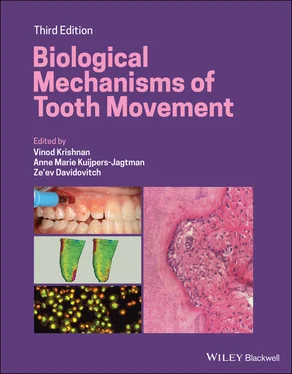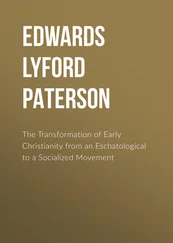Yamaguchi et al . (2016) examined whether there was individual variation in the Vickers hardness value of the cementum at the surface of the crown and root at three locations (cervical third, middle third, and apical third) of human first premolar teeth. The results of the study demonstrated that the hardness of the cementum decreased from the cervical to apical regions of the root surfaces. Furthermore, individual variations were observed in the hardness of the cementum, and the Vickers hardness value of the hard group was approximately two times higher than that of the soft group.
Yao‐Umezawa et al . (2017) investigated whether individual variation in the hardness and chemical composition of the root apex of the cementum affects the degree of root resorption. In a pit formation assay, the resorbed area in the soft group showed a greater increase than the moderate and hard groups. A correlation was noted between the Vickers hardness and the resorbed area of the cementum in the apical cementum. The Ca/P ratio of the cementum in the soft and moderate groups showed greater decreases than the hard group. A correlation was noted between the Vickers hardness and the Ca/P ratio of the cementum in the apical cementum. These results suggested that the hardness and Ca/P ratio of the cementum may be factors in the occurrence of root resorption caused by orthodontic forces. Furthermore, Iglesias‐Linares and Hartsfield (2017) suggested regulatory mechanisms of root resorption repair by cementum at the proteomic and transcriptomic levels.
Tooth movement by orthodontic force application is characterized by remodeling changes in dental and paradental tissues, including the dental pulp, PDL, alveolar bone, and gingiva. Studies during the early years of the twentieth century attempted mainly to analyze the histological changes in paradental tissues during and after tooth movement. Those studies have demonstrated that OTM causes inflammatory reactions in the periodontium and dental pulp. These reactions stimulate the release of various biochemical signals and mediators, causing alveolar bone remodeling and pain.
Although the orthodontic patient may feel periodic discomfort during treatment, the inflammation occurring along the entire duration of treatment is a crucial phenomenon because it is stationed in the heart of the remodeling process that facilitates tooth movement. Therefore, the control of inflammation and the efficiency of OTM are closely intertwined. Continuous unfolding of this intimate association will yield new information, which should enable orthodontists to provide ever improving treatment to their patients, based upon the acquisition of personal biological data of high diagnostic value. This approach to diagnosis and treatment planning draws its power from an increasing reliance upon meaningful personal information about ingredients and functions of cells affiliated with the nervous, skeletal, immune vascular, and endocrine systems. Such biological data, if included in the orthodontic diagnosis, should enable the orthodontist to tailor the treatment plan to fit the patient’s biological profile and minimize the risk of causing iatrogenic damage, such as root resorption.

Figure 4.5 (a) Schematic presentation of inflammation in the PDL cells resulting in cytokine release leading to pain, bone resorption, and possible root resorption. (b) Schematic presentation of inflammation of the dental pulp cells resulting in neuropeptide release leading to pain and possible tooth resorption.
1 Acar, A., Canyürek, U., Kocaaga, M. and Erverdi, N. (1999) Continuous vs. discontinuous force application and root resorption. The Angle Orthodontist 69, 159–163.
2 Aihara, N., Otsuka, A., Yamaguchi, M. et al. (2005) Localization of RANKL and cathepsin K, B, and L in rat periodontal tissues during experimental tooth movement. Orthodontic Waves 64, 107–113.
3 Akbulut S., Yagci A., Yay A.H. and Yalcin B. (2019) Experimental investigation of effects of platelet‐rich plasma on early phases of orthodontic tooth movement. American Journal of Orthodontic and Dentofacial Orthopedics 155, 71–79. doi: 10.1016/j.ajodo.2018.03.015.
4 Alhashimi, N., Frithiof, L., Brudvik, P. and Bakhiet, M. (1999) Chemokines are upregulated during orthodontic tooth movement. Journal of Interferon and Cytokine Research 19(9), 1047–1052.
5 Alhashimi, N., Frithiof, L., Brudvik, P. and Bakhiet, M. (2001) Orthodontic tooth movement and de novo synthesis of proinflammatory cytokines. American Journal of Orthodontics and Dentofacial Orthopedics 119, 307–312.
6 Alhashimi, N., Frithiof, L., Brudvik, P. and Bakhiet, M. (2004) CD 40‐CD 40L expression during orthodontic tooth movement in rats. The Angle Orthodontist 74, 100–105.
7 Alikhani M., Alyami B., Lee I. S. et al. (2015) Saturation of the biological response to orthodontic forces and its effect on the rate of tooth movement. Orthodontics and Craniofacial Research 18(Suppl 1), 8–17. doi: 10.1111/ocr.12090.
8 Al‐Qawasmi, R. A., Hartsfield, J. K. Jr, Everett, E. T. et al. (2003) Genetic predisposition to external apical root resorption in orthodontic patients: linkage of chromosome‐18 marker. Journal of Dental Research 82, 356–360.
9 Al‐Qawasmi, R. A., Hartsfield, J. K. Jr, Everett, E. T. et al. (2006) Root resorption associated with orthodontic force in inbred mice: genetic contributions. European Journal of Orthodontics 28(1), 13–19.
10 Andrade, I. Jr, Silva, T. A., Silva, G. A. et al. (2007) The role of tumor necrosis factor receptor type 1 in orthodontic tooth movement. Journal of Dental Research 86, 1089–1094.
11 Andrade, I. Jr, Taddei, S. R., Garlet, G. P. et al. (2009) CCR5 down‐regulates osteoclast function in orthodontic tooth movement. Journal of Dental Research 88, 1037–1041.
12 Angelopoulou, M. V., Vlachou, V. and Halazonetis, D. J. (2012) Pharmacological management of pain during orthodontic treatment: a meta‐analysis. Orthodontics and Craniofacial Research 15, 71–83.
13 Arai, C., Nomura, Y., Ishikawa, M. et al. (2010) HSPA1A is upregulated in periodontal ligament at early stage of tooth movement in rats. Histochemistry and Cell Biology 134, 337–343.
14 Arias, O. R. and Marquez‐Orozco, M. C. (2006) Asprin, acetaminophen, and ibuprofen: their effects on orthodontic tooth movement. American Journal of Orthodontics and Dentofacial Orthopedics 130, 364–370.
15 Artés‐Ribas, M., Arnabat‐Dominguez, J. and Puigdollers, A. (2013) Analgesic effect of a low‐level laser therapy (830 Nm) in early orthodontic treatment. Lasers in Medical Science 28, 335–341.
16 Asano, M., Yamaguchi, M., Nakajima, R. et al. (2011) IL‐8 and MCP‐1 induced by excessive orthodontic force mediates odontoclastogenesis in periodontal tissues. Oral Diseases 17, 489–498.
17 Baba, S., Kuroda, N., Arai, C. et al. (2011) Immunocompetent cells and cytokine expression in the rat periodontal ligament at the initial stage of orthodontic tooth movement. Archives of Oral Biology 56, 466–473.
18 Barbieri, G., Solano, P., Alarcón, J.A. et al. (2013) Biochemical markers of bone metabolism in gingival crevicular fluid during early orthodontic tooth movement. The Angle Orthodontist 83, 63–69.
19 Bastos Lages, E. M., Drummond, A. F., Pretti, H. et al. (2009) Association of functional gene polymorphism IL‐1beta in patients with external apical root resorption. American Journal of Orthodontics and Dentofacial Orthopedics 136, 542–546.
Читать дальше













